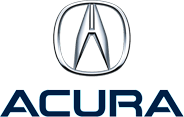In today’s modern vehicles, the transmission plays a crucial role in transferring power from the engine to the wheels. However, transmission problems can occur from time to time, leading to the appearance of transmission error codes. These codes are essential for diagnosing the issues and resolving them effectively. In this article, we will explore the common transmission error codes and their meanings, understand the impact of ignoring these codes, learn how to troubleshoot them, and discover preventive measures to avoid encountering them in the future.
Understanding Transmission Error Codes
Before we delve into the specific error codes, it’s important to understand the role of the transmission in a vehicle. The transmission is responsible for shifting gears and controlling the power transfer between the engine and the wheels. It ensures that the engine operates at its optimum power range while providing the necessary torque to move the vehicle forward or backward.
Transmission error codes are numeric values that appear on the vehicle’s computerized onboard diagnostic system, commonly known as the OBD-II. They indicate specific problems within the transmission system, allowing mechanics and technicians to diagnose and resolve them effectively.
The Role of The Transmission in a Vehicle
The transmission acts as the intermediary between the engine and the wheels. It allows the engine to operate efficiently at various speeds by adjusting the gear ratios. Whether you’re accelerating from a complete stop or cruising at high speeds, the transmission works in tandem with the engine to ensure a smooth and controlled driving experience.
When the transmission malfunctions or encounters errors, it can affect the vehicle’s performance, fuel efficiency, and overall drivability. That’s where transmission error codes come into play, providing valuable insights into the underlying issues.
Basics of Transmission Error Codes
Transmission error codes are typically standardized across all vehicles equipped with an OBD-II system. These codes are alphanumeric and consist of a letter followed by four digits. The letter signifies the general category of the error, while the digits provide more specific information about the problem.
For example, the letter “P” indicates a powertrain error, which encompasses the transmission system. The digits that follow provide further details, narrowing down the specific issue within the transmission system. Understanding these codes can help vehicle owners and technicians pinpoint the source of the problem, enabling them to take appropriate actions for resolution.
Common Transmission Error Codes
Now that we have a basic understanding of transmission error codes, let’s explore some common codes that you may encounter. One common code is P0700, which indicates a general transmission error. This code is often a precursor to more specific codes that provide further details about the issue.
Another common code is P0730, which points to an incorrect gear ratio. This code suggests that the transmission is not mechanically shifting properly, leading to issues such as slipping gears or difficulty in acceleration. Identifying the particular code can help technicians diagnose and address the underlying problem, ensuring optimal performance of the transmission.
It’s important to note that transmission error codes can vary depending on the vehicle make and model. Therefore, it’s essential to consult the vehicle’s manual or seek professional assistance to accurately interpret the codes and resolve the transmission issues.
P0700: Transmission Control System Malfunction
The P0700 code indicates a generic transmission control system malfunction. This code serves as a warning that there might be underlying issues within the transmission system that require attention. To resolve this error, it is essential to diagnose and address the specific error codes accompanying the P0700 code.
P0730: Incorrect Gear Ratio
The P0730 code signifies an incorrect gear ratio within the transmission. This error typically occurs when the transmission fails to shift into the appropriate gear, resulting in decreased performance and potential damage to the transmission components. Resolving this issue often involves removing the transmission, disassembling it, and doing a full inspection of the internal components to determine what has failed.
P0740: Torque Converter Clutch Circuit Malfunction
The P0740 code indicates a malfunction within the torque converter clutch circuit. The torque converter is responsible for transmitting power from the engine to the transmission. When this circuit malfunctions, it can result in various transmission-related issues, such as slipping gears or excessive heat generation. Addressing this error may involve inspecting and repairing the torque converter clutch solenoid or replacing the torque converter altogether.
Now, let’s delve into a few more transmission error codes that you may encounter:
P0750: Shift Solenoid A Malfunction
The P0750 code points to a malfunction in shift solenoid A. Shift solenoids are responsible for controlling the flow of transmission fluid and determining the appropriate gear for the vehicle’s operation. When shift solenoid A malfunctions, it can lead to issues such as delayed or harsh shifting, poor fuel efficiency, and even transmission failure. However, resolving this error code is not as simple as just replacing the solenoid. Solenoids rarely fail by themselves and this is usually an indicator that something else is beginning to fail within the transmission.
P0780: Shift Malfunction
The P0780 code indicates a shift malfunction within the transmission. This error typically occurs when the transmission fails to shift smoothly between gears, resulting in rough or erratic shifting. It can also lead to a decrease in vehicle performance and fuel efficiency. Resolving this issue may involve inspecting and repairing the transmission valve body, replacing worn-out components, or adjusting the transmission fluid pressure.
Understanding these additional transmission error codes can help you diagnose and address potential issues with your vehicle’s transmission system. Remember, it is crucial to consult a professional mechanic or technician to accurately diagnose and resolve any transmission errors to ensure the longevity and optimal performance of your vehicle.
The Impact of Ignoring Transmission Error Codes
Ignoring transmission error codes can have significant consequences for both the vehicle’s performance and the safety of its occupants. It is essential to address these issues promptly to avoid making the problem worse and incurring expensive repairs. Let’s explore the potential damages and safety risks associated with ignoring these error codes:
Transmission error codes are crucial indicators of underlying issues within the vehicle’s transmission system. When these codes are ignored, the problems they signify can escalate, leading to more extensive damage. For instance, a simple sensor malfunction that triggers an error code could eventually progress to a complete transmission failure if left unattended. This progression not only increases the repair costs but also prolongs the time the vehicle spends in the shop, causing inconvenience to the owner.
Potential Damage to the Vehicle
Continuing to drive with unresolved transmission error codes can lead to severe damage to the transmission system. The transmission may experience excessive wear, resulting in premature failure and the need for a costly replacement. Additionally, ignoring these issues can lead to decreased fuel efficiency, reduced power, and a less pleasant driving experience.
More importantly, neglecting transmission error codes can also impact other interconnected components of the vehicle. For example, a faulty transmission can put strain on the engine, leading to decreased performance and potential overheating issues. This domino effect of neglecting transmission errors can result in a cascade of damages throughout the vehicle, affecting its overall reliability and longevity.
Safety Risks Associated with Ignored Error Codes
Transmission errors can impact the vehicle’s drivability and safety. Ignoring these error codes may result in unexpected gear shifts, loss of acceleration, or even complete transmission failure while driving. This can lead to hazardous situations and potentially life-threatening accidents. Therefore, addressing transmission error codes promptly is crucial for ensuring the safety of the driver, passengers, and other road users.
Furthermore, modern vehicles rely heavily on electronic systems to ensure safe operation. Ignoring transmission error codes not only jeopardizes the mechanical integrity of the vehicle but also compromises its advanced safety features. For instance, a malfunctioning transmission could affect the vehicle’s ability to respond to emergency situations promptly, such as engaging traction control or stability systems. By addressing error codes promptly, drivers can maintain the optimal functioning of these safety mechanisms, reducing the risk of accidents on the road.
Troubleshooting Transmission Error Codes
When faced with transmission error codes, it is vital to follow specific troubleshooting steps to diagnose and resolve the underlying issues. Here are the initial steps in addressing these error codes:
Initial Steps in Addressing Error Codes
The first step in troubleshooting transmission error codes is to retrieve the specific codes using an OBD-II scanner. This scanner will provide valuable information about the error and its associated codes. Once you have the error codes, consult the vehicle’s service manual or an online database to interpret their meanings accurately.
Additionally, check the transmission fluid levels and condition. Low fluid levels or contaminated fluid can contribute to various transmission problems. If necessary, top up or replace the fluid according to the manufacturer’s recommendations.
When to Seek Professional Help
While some transmission errors can be resolved through DIY troubleshooting, others may require the expertise of a professional mechanic or technician. If you’re unfamiliar with the intricacies of the transmission system or if the error codes persist after attempting to resolve them, it’s advisable to seek professional help. A qualified technician can perform a thorough diagnosis using specialized tools and equipment to identify and address the root cause of the transmission error codes.
Preventing Transmission Error Codes
While transmission errors can be inconvenient and potentially costly, there are preventive measures that vehicle owners can take to minimize the likelihood of encountering them. By following these preventive measures, you can maintain a healthy transmission system and reduce the risk of experiencing error codes:
Regular Vehicle Maintenance
Schedule regular maintenance appointments with a trusted transmission service and repair specialist. Regular inspections and servicing can help detect any transmission issues before they become serious. Additionally, routine maintenance tasks such as fluid changes, filter replacements, and adjustments can significantly contribute to the longevity and performance of your vehicle’s transmission system.
Recognizing Early Warning Signs
Be attentive to any early warning signs that might indicate an underlying transmission problem. These signs often include grinding or clunking noises during gear changes, delayed shifts, slipping gears, or illuminated warning lights on the dashboard. Recognizing these signs and addressing them promptly can prevent them from escalating into more severe issues and the appearance of error codes.
Ultimately, understanding common transmission error codes is crucial for effectively diagnosing and resolving transmission issues. By promptly addressing these error codes, vehicle owners can maintain a reliable and safe driving experience. Implement preventive measures and seek professional help when necessary to minimize the chances of encountering transmission error codes in the future.


 Free Customer Towing Service
Free Customer Towing Service  Free TrueTest™ Inspection
Free TrueTest™ Inspection  Fast Transmission Services
Fast Transmission Services  Comprehensive Warranty in Denver
Comprehensive Warranty in Denver 

























